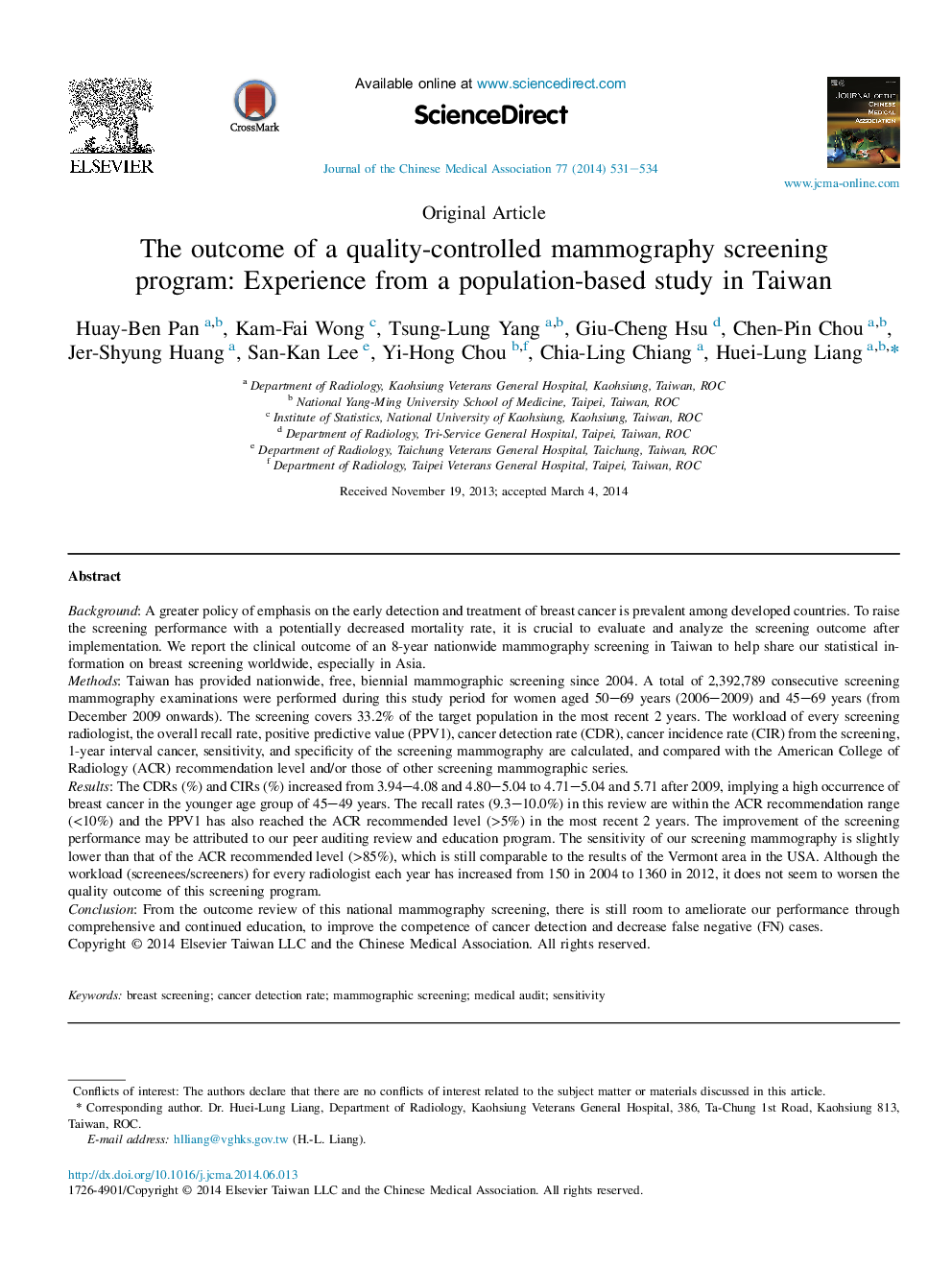| Article ID | Journal | Published Year | Pages | File Type |
|---|---|---|---|---|
| 3475990 | Journal of the Chinese Medical Association | 2014 | 4 Pages |
BackgroundA greater policy of emphasis on the early detection and treatment of breast cancer is prevalent among developed countries. To raise the screening performance with a potentially decreased mortality rate, it is crucial to evaluate and analyze the screening outcome after implementation. We report the clinical outcome of an 8-year nationwide mammography screening in Taiwan to help share our statistical information on breast screening worldwide, especially in Asia.MethodsTaiwan has provided nationwide, free, biennial mammographic screening since 2004. A total of 2,392,789 consecutive screening mammography examinations were performed during this study period for women aged 50–69 years (2006–2009) and 45–69 years (from December 2009 onwards). The screening covers 33.2% of the target population in the most recent 2 years. The workload of every screening radiologist, the overall recall rate, positive predictive value (PPV1), cancer detection rate (CDR), cancer incidence rate (CIR) from the screening, 1-year interval cancer, sensitivity, and specificity of the screening mammography are calculated, and compared with the American College of Radiology (ACR) recommendation level and/or those of other screening mammographic series.ResultsThe CDRs (%) and CIRs (%) increased from 3.94–4.08 and 4.80–5.04 to 4.71–5.04 and 5.71 after 2009, implying a high occurrence of breast cancer in the younger age group of 45–49 years. The recall rates (9.3–10.0%) in this review are within the ACR recommendation range (<10%) and the PPV1 has also reached the ACR recommended level (>5%) in the most recent 2 years. The improvement of the screening performance may be attributed to our peer auditing review and education program. The sensitivity of our screening mammography is slightly lower than that of the ACR recommended level (>85%), which is still comparable to the results of the Vermont area in the USA. Although the workload (screenees/screeners) for every radiologist each year has increased from 150 in 2004 to 1360 in 2012, it does not seem to worsen the quality outcome of this screening program.ConclusionFrom the outcome review of this national mammography screening, there is still room to ameliorate our performance through comprehensive and continued education, to improve the competence of cancer detection and decrease false negative (FN) cases.
